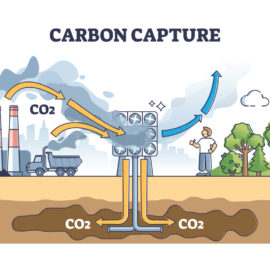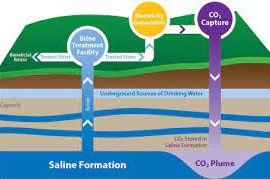
Carbon capture is the way that the Governor and others around the country have said is the savior of climate change. It was demonstrated at LSU to some in a position to bring it to the forefront.
As LSU searches for ways to position itself as a major player in the energy industry, the LSU Petroleum Engineering Research & Technology Transfer laboratory has taken center stage in its plans. The laboratory on Friday showed off its work to U.S. Sen. Bill Cassidy and LSU President William F. Tate IV, focusing on carbon capture, utilization and storage. Carbon capture is a method of reducing carbon emissions by capturing and storing carbon dioxide before it enters the atmosphere. Louisiana recently committed $5 million to improve energy-related research at LSU, and carbon capture has become a big part of that. “As part of the state Legislature’s investment in LSU during its past legislative session, some portion of the dollars that were appropriated for LSU are to upgrade some of the technology capabilities at the PERTT lab,” said Samuel Bentley, LSU vice president of research and economic development. “So that we can test other aspects of CO2 gas and also possibly hydrogen gas transport through both surface pipelines and into the subsurface.”
theadvocate.com
A university looking for a way to make it to the national stage and politicians looking a way to get rid of carbon. A marriage made in heaven?
Karsten Thompson, an LSU petroleum engineering professor, said upgrades to PERTT laboratory technology will help the facility improve its carbon testing capabilities. “We expect to be drilling a new well and putting a surface flow loop out here at PERTT lab, specifically tailored to CO2,” Thompson said. “We can’t run it in our current wells just because it’s too corrosive once it touches water, so we want to use stainless steel, fiberglass or whatever is needed to run a new system and start doing research that’s CO2-related instead.” According to Bentley, research developed through testing at PERTT labs is designed to create an environment where LSU can safely test carbon capture and carbon sequestration methods. Carbon dioxide is a primary component of greenhouse gases that contribute to global warming and climate change. “The objective is to make all kinds of downhole operations safer and more efficient,” he said. “Carbon sequestration, especially subsurface carbon sequestration, is going to involve injecting CO2 gas into the subsurface and sealing it up in geological formations. We want to do this cost-effectively and very safely.” Bentley said that he could see PERTT laboratory becoming a leader in downhole carbon testing operations across the world. “Having the best sensors to monitor what’s going on both during injection and after injection is all very critical,” he said. “As you can imagine, this is building next-generation technologies that could be applicable worldwide in downhole operations of various kinds.”
Cassidy admitted the obvious, we have a carbon intensive economy and so we need to solve the problem.
Following the tour of the laboratory, Cassidy described Louisiana’s economy as “carbon-intense” and said future LSU carbon capture and carbon sequestration research could help the state compete with other countries developing similar products. “The meta-trend worldwide, if our products are going to be competitive, is that we have to make the same products not as carbon-intense,” Cassidy said. “If we succeed, it’s going to create a lot of jobs and it’s going to ensure Louisiana’s prosperity, greater prosperity than we have now, as we position our state to better compete with products from Asia and Europe and elsewhere.” The carbon research conducted at the PERTT laboratory aligns heavily with the priorities of Tate and his Scholarship First Agenda, specifically as the agenda has an emphasis on energy as one of its core five tenets. “Through the Scholarship First Agenda and its five focal areas of the pentagon – agriculture, biomedicine, coast, cyber defense and energy – this remarkable growth trajectory continues with our commitment to excellence in research and scholarship for the state,” Tate said in a statement ahead of the tour.
LSU wants to become a world leader in carbon capture.
Thompson shared that testing carbon capture and carbon sequestration operations will make the PERTT laboratory, and LSU by extension, a global leader in carbon research. “When we build that new system here, it’s going to be something like nobody has,” Thompson said. “People will come here nationally, for sure, and maybe internationally to do experiments here. By the technology that we understand, publishing papers and presenting at conferences, we’re creating global understanding and global technology that will be used everywhere.”
I hope LSU does and I also hope that carbon capture works. The testing at LSU should show the promise of the idea.



